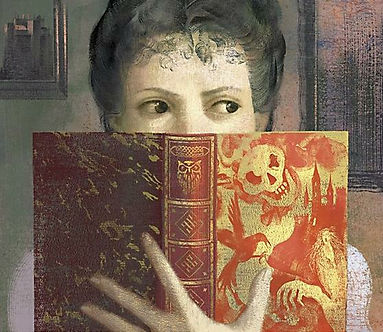The Big Boring Book Blog
READ ALL ABOUT IT
Northanger Abbey by Jane Austen
Style and Theme
-
Jane Austen’s literary style depends on irony, parody, free indirect speech, and realism
-
She uses parody and burlesque for comic effect and to critique the portrayal of women in 18th-century sentimental and gothic novels
-
Austen shows her criticism by highlighting social hypocrisy through irony; she often creates an ironic tone through free indirect speech in which the thoughts and words of the characters mix with the voice of the narrator.
-
Austen's plots are fundamentally about education; her heroines come to see themselves and their conduct more clearly, and become better, more moral people.
-
Austen stays away from the formal moralizing which was common in early 19th-century literature, morality—characterized by manners, duty to society, and religious seriousness—is a central theme of her works.
-
Her novels highlight how some female characters take charge of their own worlds while others are confined, physically and spiritually.
-
Her works explore the risky economic situation in which women of the late 18th and early 19th centuries found themselves.
Summary
Northanger Abbey is the coming-of-age story of a young woman named Catherine Morland. The Allens, family friends of the Morlands, offer to take Catherine with them to Bath, a resort for the wealthier members of British society. n Bath, Catherine is introduced to Henry Tilney, a young clergyman who impresses Catherine with his wit and pleasant conversation. Catherine quickly falls for Henry, but after their first meeting she does not see him again for some time. Mrs. Allen runs into an old acquaintance, Mrs. Thorpe, and her three young daughters, including Isabella, who is slightly older than Catherine. Catherine and Isabella are soon best friends. Isabella, superficial and fond of gossip, inducts Catherine into the social world of Bath, with all its balls, dances, shows, fashion, and its gossip. Catherine and Isabella are met with the arrival of James Morland, Catherine's brother, and John Thorpe, Isabella's brother. Book II begins with the arrival of Henry's older brother, Captain Frederick Tilney. Isabella begins to flirt with Frederick. Eleanor invites Catherine to visit the Tilney home in Northanger Abbey. On the way, Catherine tells Henry how she imagines the Abbey to resemble the haunted ruins of the Gothic novels she loves. Catherine becomes intrigued by the death of Eleanor and Henry's mother years earlier. Her mind full of Gothic plots, Catherine suspects that General Tilney of murdering his wife. Catherine sneaks into the mother's old chamber and discovers nothing. Henry and Catherine decide to wait until the General gives his consent to their marriage
Analysis
Many refer to Northanger Abbey as Jane Austen's "Gothic parody" because it satirizes the form and conventions of the Gothic novels that were popular during the time.
Austen is said to have targeted Anne Radcliffe, the author of gothic novels such as A Sicilian Romance (1790), The Romance of the Forest (1791), and The Mysteries of Udolpho (1794)
Austen captures some of the psychological tension typical of Gothic novels by chronicling Catherine's delusions.
Quotes
“Catherine began to feel something of disappointment - she was tired of being continually pressed against by people, the generality of whose faces possessed nothing to interest, and with all of whom she was so wholly unacquainted.” (2.10)
“There is nothing I would not do for those who are really my friends. I have no notion of loving people by halves, it is not my nature.”
“It is only a novel... or, in short, only some work in which the greatest powers of the mind are displayed, in which the most thorough knowledge of human nature, the happiest delineation of its varieties, the liveliest effusions of wit and humour, are conveyed to the world in the best-chosen language”
